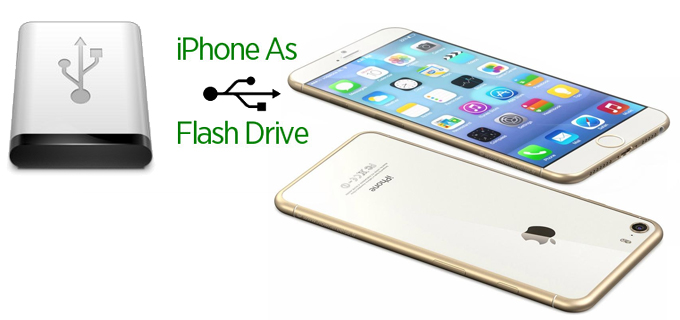
Do we still really need to keep carrying around those USB thumb drives? If we come to think about apps such as the newly released iOS Pocket Drive, the answer is, more than likely, NO. Below you can find several app options that can replace traditional thumb drives and redefine our position regarding file management applications designed for iOS devices.
A portable alternative to traditional USB memory drives
Many of us used to carry around USB memory drives containing important files on our key chains or lanyards. In order to avoid sensitive information to fell into criminal or unwanted hands, all the stored files were encrypted and protected. However, the software of the drive, which is needed to be able to access the stored files, does not always work as it is supposed to. Thankfully, carrying around USB memory drives attached to keychains and lanyards is no longer needed. All one needs is a good app that allows you to transfer files between your smartphone or tablet and your PC.
The iOS devices produced by Apple are not delivered with file manager interfaces. So we decided to give Pocket Drive, the newly released iOS app, a try. Despite the fact that this file manager is not perfect, it still gets the job done.
Pocket Drive: How to make the most of it
Pocket Drive is a free application. However, the no-cost version has a limit of only 512MB storage capacity. For $2, you can upgrade it to 4GB, or you can opt for 16GB ($3), 32GB ($4) or even get unlimited storage for only $5. These fees must be paid only once. Since the 512MB storage capacity is not much, you will more than likely want to upgrade to a paid version. Though the application recurrently asks for an upgrade until it convinces you to spend a couple of dollars, the free version is less annoying than other similar apps (for example the free File Manager app) and does not bomb you with endless ads.
Pocket Drive requires a quick and easy set up. When the app is launched for the first time, the PC automatically detects the mobile device. So we put it to a test. Once Pocket Drive was installed, our iMac automatically listed our iPhone 6 Plus amongst the “Shared” devices. Next, in the Mac OS X Finder, we clicked the iPhone and established a wireless connection. As a security method, you will be asked to accept the connection.
Once the connection was established, we started to drag and drop PDF, Word, and Excel files, along with music and video files from the iMac’s hard drive to the iPhone. Many of the transferred files showed up instantly in Pocket Drive. Larger files – such as videos – understandably do take a few seconds. After transferring the files, you simply have to tap to view them. Pocket Drive can support MP3 and video playback. As a matter of fact, since it imitates a record player, the MP3 player actually looks pretty cool. Pocket Drive can also be connected to TVs to play videos by using an Apple TV and Apple’s AirPlay.
This app’s “Share” icon allows you to open files and process them in other iOS apps as well. For example, we used the app to open Excel spreadsheets in the Excel iOS app. We then saved them as new files in a Dropbox folder and edited them. This process was simple, quick, and painless.
However, moving files – using Pocket Drive – from an iOS device to a Mac or Windows PC is a little bit more complicated than that. If you wish to achieve this, you can open a file in a cloud-storage account or in Dropbox, and then select Pocket Drive as the “Open In” option. Nevertheless, this method is useless if you wish to transfer photographs from the iPhone’s Camera Roll, mainly because you will not find an “Open In” option. Since Dropbox’s free Carousel, iCloud’s My Photo Stream, or Apple’s AirDrop make uploading photos to a Mac extremely simple, this is not a major drawback.
Other alternatives to Pocket Drive
Pocket Drive is not the only available “virtual USB thumb drive” alternative. Apart from the File Manager app we have already mentioned in this article, File Manager Pro (which only costs $5) is also a valid option. Another alternative could be FileMaster, which is a free app. The ads can be easily removed with an in-app purchase that will only cost you $3. This app was last updated on Dec. 6, 2014, and enjoys a 4.5-star user rating. This app comes with practically all the features that one would expect a file manager to have. This includes features such as Wi-Fi transfer, a powerful built-in web browser, folder management (create, copy, edit, delete etc.), a media player, or a document viewer. In addition, the app comes with a password lock.
To put this short and simple, unless you really need to keep at hand a drive that you can easily stick into someone else’s PC, an app such as Pocket Drive, File Manager Pro or FileMaster can probably meet all your portable storage needs, thus making your life much simpler and adding additional power and functionality to your iOS devices. Thankfully, though Apple does not include file management into its arsenal of apps, it allows developers to enable this feature on tertiary levels, thus allowing users to easily view, upload, control and manage files from a wide variety of sources (including Dropbox-like cloud storage or remote laptops and desktops) right on our iPads and iPhones.
